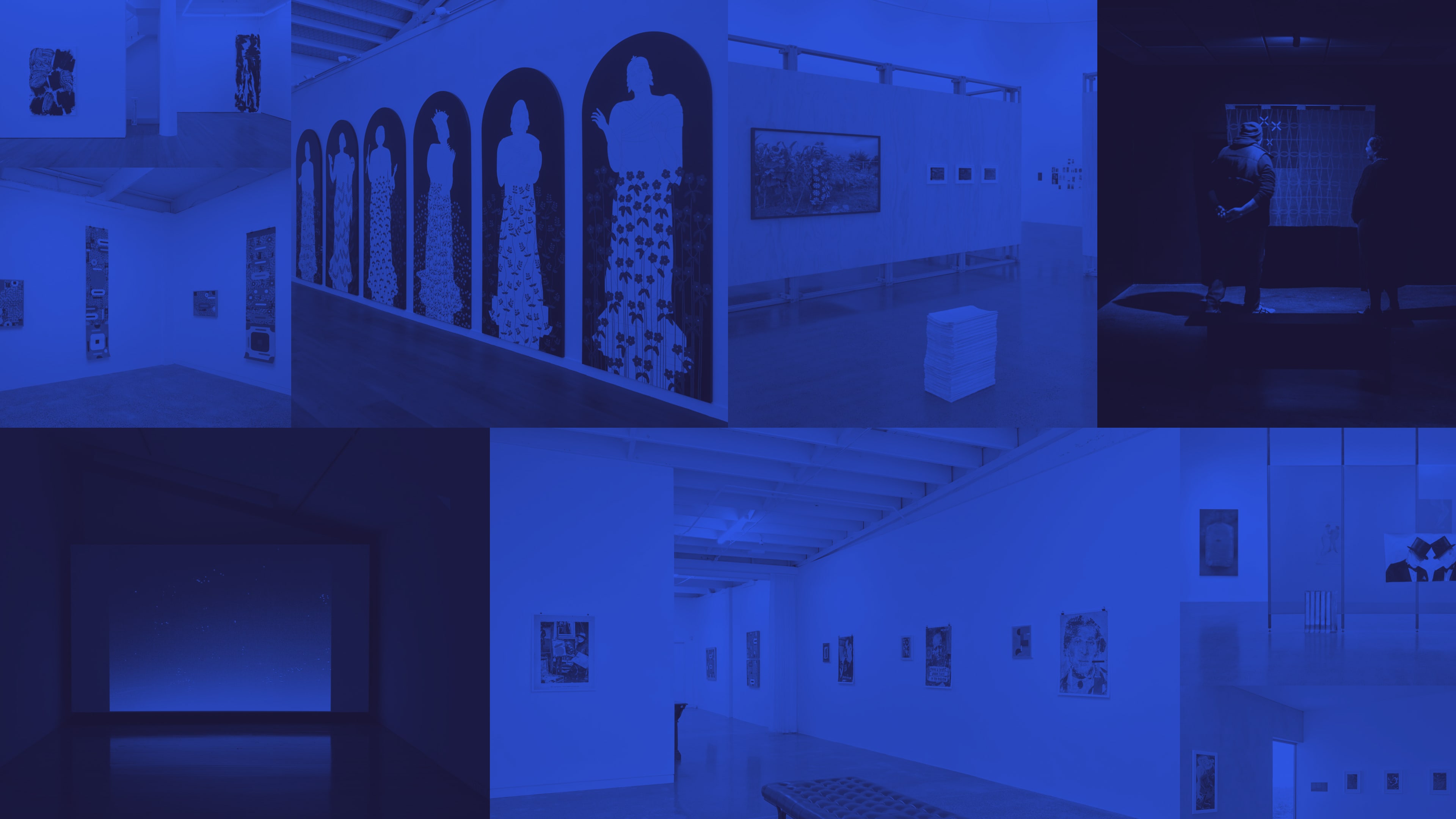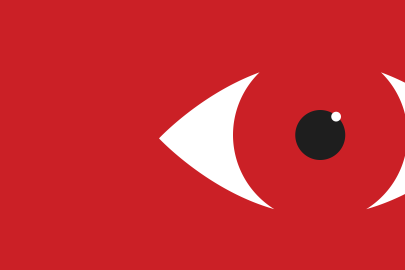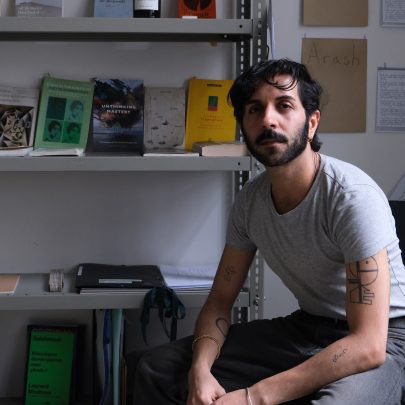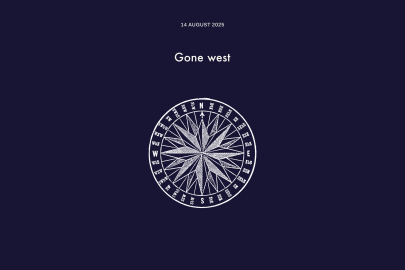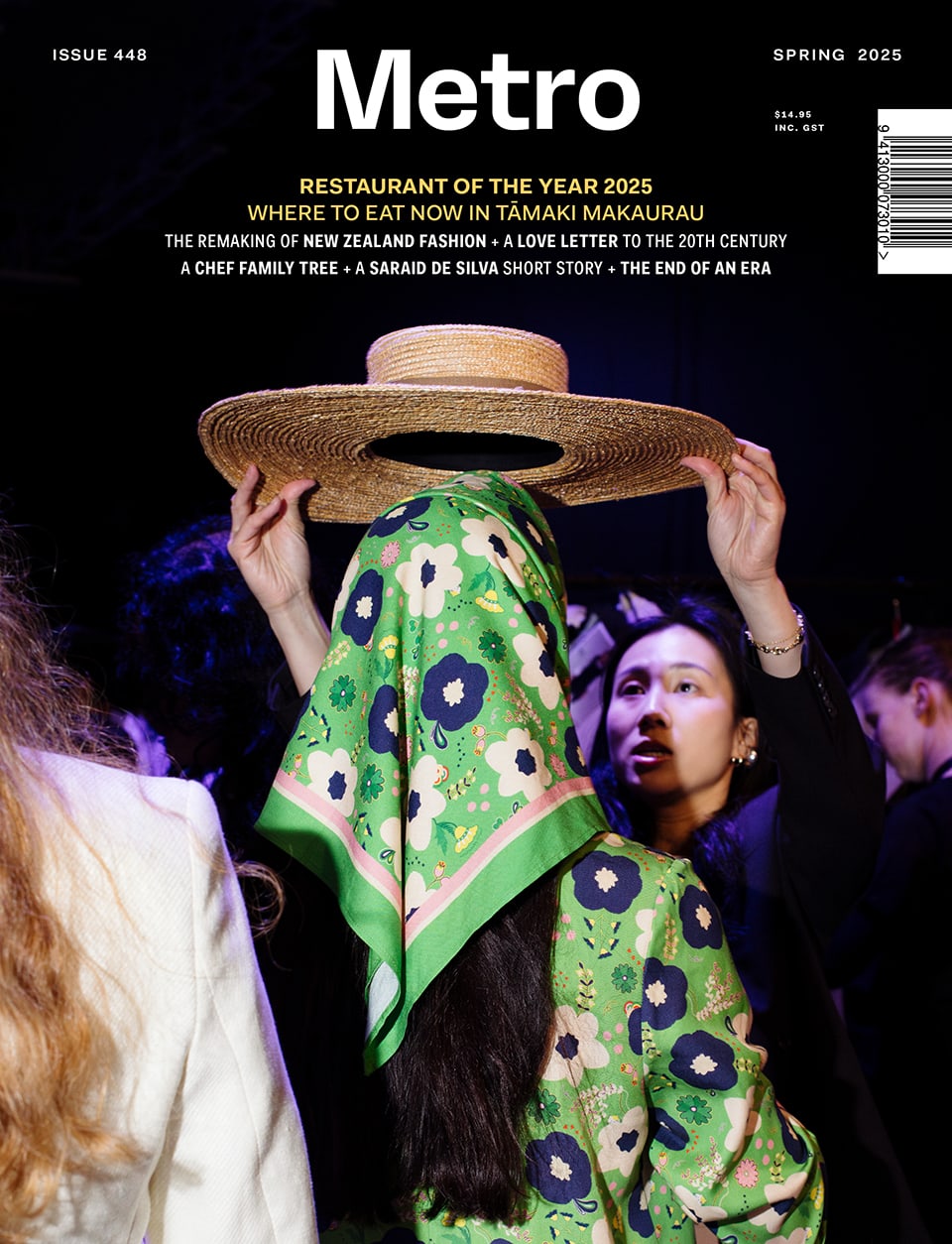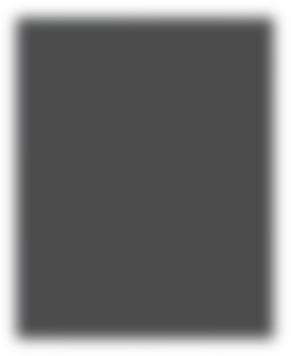Jul 16, 2025 Arts
Here we are again, looking at art. That might seem like a fickle pursuit, as we nosedive into national austerities and a global climate that has something of Weimar Germany about it (*cough*). Which begs the (endlessly repeated) question — why art? Why bother looking at locally curated shows of local artists when our foundational principles are being renegotiated, disassembled, demoralised? Why bother taking in the esoteric expressions of this painter or that sculptor when our public healthcare system strains under the cuts and freezes on hiring, I guess in a bid to embolden the private system, so we might (inexplicably) continue towards the sanctioned murder of America’s pay-per-view approach. Why bother indeed when there’s any number of civil unrests and a live genocide diverting the eyes?
But, unfortunately, these instabilities are nothing new. The world has seen and weathered, if not worse, then much the same before. Which isn’t to minimise this moment and its shrill trials, rather, it’s to drive home that recoiling from the humanities is not an appropriate response. In fact, if history teaches anything it’s that the reflexive bolstering of defence budgets and the cuts to almost everything else — ‘efficiency’ at the expense of public wealth (the usual legislative response to these kinds of times) — is never the right vibe. Better to shelter the humanities and the worldviews they foster and clarify, which, and let’s not pretend otherwise, have a political pipeline. Call me naive, but I do think the link between politics and culture is still a live one. On a more practical note, it’s the arts and humanities that are singly (or largely) tasked with describing the world which austerity measures claim to protect and uphold. So you do the math.
With that in mind, this tentative sweep of galleries in Tamaki Makaurau hopefully shows, if not a collective movement, then eddies and passages from chaos to order. Which isn’t to say that every show featured here is an overtly political one. Rather, that the choice to make art at all, and then to give it serious patronage, is an inherently political one. It shows that there are those of us who still prefer a world of (meandering, exploratory) beauty, the requisite conditions of which are peace. Art as democracy’s pulse check? Maybe.
Duendes by Alberto Garcia-Alvarez
At Tim Melville Gallery, 4 Winchester St, Grey Lynn
The first thing you notice on approaching the gallery is a sharpness of multi-coloured geometries. Then, as if coming into focus, this sharpness transforms into urgency. As if the paintings of Alberto Garcia-Alvarez were getting louder. As if the artist, who is 97, might be approaching and grappling with his own mortality. As if these shapes, his shapes, were greeting angels. Not that this show is decidedly about death. Take Garcia-Alvarez’s painting from light (2024). A menagerie of shapes and colours, but mostly a treacly black alternately glossy and matte, flecked with kinetic reds and angular whites. The artist’s use of colour here is almost percussive. A funeral dirge? No. Too vibratory for that, thrumming with trapped energy (and sacred mysteries, like an Aphex Twin deep cut, building and gliding). And then emerging forms, rather like (for these eyes anyway) a swan extending its neck out of some bad weather. But not towards freedom. Rather, there’s sense of a breath being taken before a plunge back in. The rest of the works (canvases large to small, flat multi-media of wood and paint) work along the same lines, between rhythmic brutality and vulnerability. It’s exciting to see something so, for lack of a better word, musical. Trilling and booming in cryptic (cosmic?) scope.
This symphony of contrasts makes sense considering the name of the show, Duendes, which is a Spanish term for a being “not in existence”. So, Garcia-Alvarez’s images here are like djinns, beings of the mind, cavorting, wraith-like; now resplendent, now terrifying. The fact that the painter was born in a Spain racked by fascism (which he fled with his family) is perhaps another primer — that these djinns or duendes, intermittently active and dormant, are the inauspicious psychic engines of times like ours.
Jazz Heroes by Gavin Chilcott and Theres a Bright Golden Haze on the Meadow by Denys Watkins
At Ivan Anthony, 564 Great North Rd, Grey Lynn
It’s the work of Denys Watkins in Theres a Bright Golden Haze on the Meadow that greets you as you enter the gallery, and already you’re enfolded into a consistent and aesthetically lush joke. This particular joke was started by The Who in 1967 with their album The Who Sell Out, which satirised the burgeoning commerciality of pop music. Ironically, post-Beatles psychedelia ended up being a market-friendly vehicle for product placements, a fact art-school drop-out and Who guitarist Pete Townshend loathed. Minimalist in its presentation, the album’s cover featured actual ad copy underneath Townshend and bandmate Roger Daltrey posing with oversized products: for Daltrey an obscene surplus of baked beans, and for Townsend an absurdly massive roll-on stick of Odorono (which he fits awkwardly under his arm). It’s this specific image Watkins reproduces here, followed by a blown-up Odorono ad that never was, in a stark and sombre palette and with vaguely Bauhaus lettering. It is as if Watkins has found the spiritual kernel of the product, filtered it through Townsend’s disdain and revivified it on canvas. From this, Watkins gives us a tour through portraits of famous painters (Jackson Pollock, Andrew Wyeth, Kees van Dongen, Marc Chagall) decorated with abstracts from the heightened visual-world of Odorono — deliberately blurring the line between commerce and high art. While such commentary might seem dated in 2025, for the artist this seems to be the point. Perhaps we’re living in a world so accustomed to consumer edicts that its crossbreeding with more ‘sacred’ cultural production is well past the point of being an affront (or even a discernible occurrence). What matters here, then, and what Watkins seems to be (playfully) saying, is that the image can dance between the grips of tormented genius (*cough*) and glossy adverts, and survive as something vibratory and relevant.
Then, in the back half of the gallery, we have Gavin Chilcott’s Jazz Heroes. Like Watkins, Chilcott plays with screenprinted image refrains, though without Watkins’ witty signposting. Instead, we have labyrinthine miasmas of line and colour. Mazes dotted with plasticky carcinomas. Bright blooming oblong aggressions on a base of rational grids. We can only speculate, of course, but we might venture that these works point to the ways in which we metabolise images, memory, experience, or are the sparking (attempted) integrations of left and right hemispheres of the brain. Certainly the show’s title points us toward the combustible freestyle usually paired with certain forms of jazz. An associational drift of patterns and breaks, held then disrupted when least (or even most) expected. And this is presumably the artist’s point — he throws up shapes and colours that the viewer’s eyes can’t help categorising; he triggers us to knit meaning from randomness. This highlights the mind’s insistence on legibility even where there is none, and the frequently absurd (but fruitful) side quests we take while seeking it. Going further, perhaps this is Chilcott proselytising faith in nonsense? Asking us to leap before the arrival of some weightier meaning, which is always delayed, and to trust in the impulses of the eye (or, like certain jazz heroes, the inner ear).
RAW by Andy Leleisi‘uao and James Robinson
At Bergman Gallery, 3/582 Karangahape Rd, Newton
Here, two artists, Leleisi‘uao and Robinson, give us a tour through wounded memory — a tour couched in their Pacific identities but with a rawness of expression touching on something primal, unfettered, like the enraged fugue of the cornered animal. It nods towards the increasingly common claustrophobia, under a universally tightening net, of our moment in time. Leleisi‘uao’s rage is embodied in bold stark portraiture of family members of his parents’ generation. There’s something in his almost picture-book palette that rips through the subtleties of identity, capturing the violence these relatives endured under empire’s shifting topographies. In particular, a profile of (I presume) the artist’s mother (or perhaps a grandmother) as you enter the gallery, Fa‘afetai, Fa‘afetai, Fa‘afetai (2025), smacks you in the face with its emotion. Bewildered, overwhelmed, figure and viewer alike take a breath to assess damages which will be felt in unfathomable ways generations from now.
Robinson’s rage appears in more impressionistic captures — grimily textured paintings and sculptures like clotted fishing lines from a deep-sea trawl. They portray the ruin of loss itself, articulated through assemblages of charred or oil-slick objects melted together in vertical rows (RAW NAKED NOW, 2024), like the debris of some great conflagration. It is as if the two artists were tasked with rendering cultural grief — its impact on ecologies outward and inward — from two different vantages. The resulting, wow-inducing work is eloquent, hostile and shiny with resilience in the face of systemic and historical malice, forged in individual crucibles that lesser mortals should pray they never encounter, but simultaneously pointing to a collective pain-body that is, in fact, everyone’s business. Our prickly human inheritance.
Borne and Bred by Linda Va‘aelua
At Tautai, 300 Karangahape Rd, Newton
At Tautai, artist Linda Va‘aelua explores what it means to be first-generation New Zealand-born Sāmoan against the backdrop of Tāmaki Makaurau, looking into the looser adoption of heritage being displaced entails. There’s nothing of overwhelming discomfort or loss here, or, at least, these things are coded stealthily between the deceptive simplicity of Va‘aelua’s motifs: Pacifica imagery filtered through the adaptive, diasporic strategies of home-making in a foreign land. For example, she offers a wall-affixed roll of newsprint — which I only recognise as dressing for tables (perhaps in a wharekai or fale) from working hospitality for roughly 16 years — patterned in Pacifica totems of tropical flowers, hearts and crosses (which, depending on how you’re viewing it, appear upside down). These same motifs are scaled up and given further totemic power as hanging pendants, strung next to Sunday-best hats. Finally, they appear again in a more extreme congress as plastic jewels (tokens?) on a floor-to-ceiling mosaic tapestry, the same sigils repeating in alternating colours, again and again. There is pride here, obviously, but the viewer also gets the distinct impression (against an otherwise sunny palette) of circularity, of expression limited within the confines of identity — as if the artist were trying to exhaust a restrictive set of culturally appropriate mediums in order to break out of them. The exhilarating use of an upside-down cross combined with a recording of a church service imbues the deceptively joyous work with a quiet unease. For the patient gallery visitor, it works a woozy sort of (dark) magic. Perhaps it’s the mute fury of things that cannot (yet) be said.
Echo by Emily Wolfe, Rebecca Wallis, Veronica Herber and Kirstin Carlin
At Melanie Roger Gallery, 444 Karangahape Rd, Newton
Group shows of two or more artists are interesting because of the overall effect the works (hopefully) have, and here the effect is successfully dreamy and ethereal, with each artist bringing something unique to these concepts. Rebecca Wallis’s frames are a sort of pastel absence, which might sound disparaging but is meant as a compliment. Veronica Herber’s ghostly shapes seem to flicker in and out of existence, though they’re technically a static swarm. Kirstin Carlin’s painting brings sturdier brushstrokes to the cloudy theme, cutting through what’s immaterial with wet floral arrangements. Their refusal of sharpness crystallises the vapours around them into something you can touch, feel (though perhaps not taste). Then there’s the densely detailed figurative painting of Emily Wolfe, whose pictures-of-pictures only seem ephemeral. Closer inspection shows that it’s taken the artist double the chutzpah to maintain her illusion of the phantasm, of that which eludes definition. While the works around them gesturally capture the idea of ‘the trace’ (which is, perhaps, how we might define the ethereal: a fleeting glut of fading traces), Wolfe’s frames make an effort to pinion the trace, to make it stick. This is done quite literally, by painting what you can imagine as references on a studio wall. Wolfe has wrangled the usually intractable, ineffable movements of her own artistic process into paintings of paintings. In doing so, she might be telling us something about how the artist collects and stores charged images before synthesising them as new expressions. Or as the show’s title perhaps suggests, her references may even be an allusion to the ways in which we all metabolise memory: a thickening of echoes.
Night Writing by Conor Clarke and Dream Diary by Joyce Campbell
At Two Rooms, 16 Putiki St, Arch Hill
Starting you off on ground level is Joyce Campbell’s Dream Diary, a sizeable collection of thermal scans of the Karekare hills and a handful of excerpts from her dream journal. The body of work took shape from the intense dreams the artist had when she was living in the region, and her images seem to have extracted some supernatural character from the landscape, which her nightly visions may or may not have been communicating with (witch-gleanings). This nether-realm is not so much removed from everyday reality as underpinning it. Campbell’s stealthy dimensional rifts are visible only to the entranced, the squinting seeker, viewing by fugue, by delirium. Close up, their formations collapse into the virtual noise of zeroes and ones; step back, and their granular dashes compose massive alien canyons. The visual results are not unlike the images NASA’s Mars rovers occasionally send back — lonely grandeur, cathedrals assembled by the patient geo-logics of wind, rain and inconceivably massive swathes of time. It harks back (lightly) to Rupert Sheldrake’s fringe-scientific notions of biomorphic resonance — that all matter has a small photonic charge and is trying to communicate its crystalline structures to us, if we’d only turn our gaze to more subtle light sources.
Upstairs is Conor Clarke’s video work Night Writing, which, in a manner similar to Campbell’s planar scanning, uses thermal imaging to render the nocturnal flight paths of the endangered Kaikōura tītī (Hutton’s shearwater). Both artists use the medium of the lens to abstract nature into something even more luminous, more ponderous. It is as if they are saying that nature alone isn’t or hasn’t been enough to convince us of ordinary miracles, or to attribute the appropriate respect — seeing as Clarke’s subject is an endangered species — to creatures whose life-worlds have been irrevocably degraded by our own. The artist’s work is far from heavy-handed, though. Rather, her capture reads like a time-shuttered constellation turning with the planet’s orbit, transforming birds into shooting stars — birds whose peculiar habit of flying only at night raises questions about their means of navigation. Perhaps, as with Campbell’s séance with a mirror-world-Karekare, Clarke’s birds commune with something unseen — a presence in the night that they’ve evolved in step with. I imagine them triangulating with this subtle source the way satellites slingshot on long-wave leashes. If the Kaikōura tītī go extinct, then this two-way channel will fall silent, permanently.
Female Rubbish by Nicola Blumenthal and Rea Burton
At Treadler, 454 Karangahape Rd, Newton
I don’t know if either artist would cite John Waters as an overt reference, but the sludgy presentation of these sculptures and the almost sneering show title (à la John Waters’ Female Trouble) perhaps put them in the same world by default. And it’s a world of femininity as something rabid and hungry, as opposed to the demure trad-wifery that’s become Gen Z’s unfortunate fascination. Against this conservative backlash and its related regressive instances (like the United States’s Gilead-adjacent snipping of women’s healthcare or our own equity atrocity courtesy of Brooke van Velden), Nicola Blumenthal and Rea Burton’s Female Rubbish is a tour through the detritus of femaleness, whatever that is. They show some of the props of being a woman trashed, consumed and discarded, as her appetites dictate. Makeup products are stuck to mirrors, literally glued by the overspill of the chemical components she’s conditioned to mask herself with. Candles, ribbons, brushes — these gendered accoutrements, the implements of feminine toilette, have been ravaged in their very use, sacrificed to performative daily life, against their latent message to curb the animal within. It’s an exhilarating collaboration between two very different artists, consistent with Blumenthal’s existing object practice but a thrilling departure for Burton, whose figurative painting is a quiet national excellence. And I’d be remiss not to mention what these reviewing eyes read as a small Brat nod — a plate smeared with a touch of that very familiar green, overflowing with the guts of an exploded disco ball (Female Rubbish 3, 2025). Charli XCX as feminist iconoclast? Bumping that.
Judy Millar and Kate Newby
At Michael Lett, 312 Karangahape Rd, Newton
‘Enormous’ is a word that comes to mind when you enter Michael Lett and are quite literally confronted by Judy Millar’s humongous paintings and Kate Newby’s tile wall, a scaling-up of her usually petite ceramics to match Millar’s cryptic monuments. Their size is one obvious reason that these works feel elemental, as if you aren’t looking at the labour of artists so much as geological formations, lyrical fingers of cliff, swirls of marble in situ, wonders of the natural world thrown up by topographical and barometric forces. Maybe they are even the rigid survivors of prolonged inclemency, things that faced the storm and lived. Without an overarching show title, it’s the names of the individual works, all as cosmically expansive as the viewer’s eye suggests, that point subtly to some couching theme. Take, in particular, the names of Newby’s smaller offerings, Start somewhere (2025), To begin with, everything (2025) and I know the sky is ready (2023), and their forms and colours: glossy ceramics, the rusts and ochres of malleable clays, like those of nakedly revealed veins of earth after a landslide. These all speak to preoccupations with beginnings, of the mysterious and inconceivable kind. The Genesis kind. I know the sky is ready takes the fecundity of clay and wrestles it into the angles of culture, of human dwelling. The work is something homely made out of something that is, essentially, a mystery: the sublimely indifferent Earth itself. Newby’s On the benefits of building (2006) is something of a primer for this process, while Millar’s paintings haunt the angles of that built architecture with a reminder of their native instabilities. The steely, red One-Two (2024), for instance, somehow captures the molecular furies at the heart of our industrial endeavours. Whispers to us the volcanic secrets of the forge.
Oil and Water by Jelena Telecki, Life in forms by Pauline Kahurangi Yearbury and Photosynthesisers: Women and the lens
At Te Uru, 420 Titirangi Rd, Titirangi
I hadn’t been familiar with Jelena Telecki’s work previously, but whoever she is (a Yugoslavia-born, Sydney-based artist, it turns out), Oil and Water is a beguiling introduction. There’s really no avoiding it (today’s resurgent conservatism and embittered/bewildered public make for ominous parallels): the artist’s trans-Atlantic-styled, Weimar-esque figures smack of the transitional generation between the First and Second World Wars — you know, the one that accidentally formed the Reich and shattered Europe (gulp). Though these themes constantly inhabited my own mind, Telecki perhaps only gestures at them, through stylistic choices. Her more self-conscious subjects are things like failure and addiction (the moustached liquor bottle of Whiskey Sour, 2021) or swirling hostilities between competitors (the gentleman frenemies of Top Hats, 2024), existing in a mostly barbaric (and grey) world. Power differentials certainly seem to be on the artist’s mind, as shown in her comically irreverent gimp suits. One work in particular jumped out at me as overtly circling themes of fascism — a figure in a yellow athletics suit, sitting on a cantilever chair, mid-action (Almost, 2021). If the body suit is Telecki’s shorthand for power (as in Gimp: Love is Golden, 2024; Banner 4, 2024), putting one in frame with a cantilever chair (a Bauhaus invention of cosmopolitan Berlin, pre-Reich) is a pointed choice. Melancholic but funny. And in its themes of ordinary abjection, Oil and Water is oppressive, deliciously so.
Pauline Kahurangi Yearbury (Ngāpuhi) was the first Māori woman to study modern art at Elam, alongside Kāterina Mataira, and the first person to depict Māori myths in a modern style. It’s been 48 years since her death, in 1977, and honestly, her incised wood panels remain an authoritative effort to depict traditional Māori pūrākau with contemporary sensibilities. In other words, they still slap. For starters, there’s the kinetic drama Yearbury’s modern style brings to these figures — like the leering ferocity of Kurangaituku, her Picasso-ish angularity, as she looms behind Hatupatu in Hatupatu and the Bird Woman (1966). These angles are eventually discarded by Yearbury for a visual style that’s more fluid; her figures rounded, as if signalling the richness and plenitude of Māori worldviews — specifically, the spiritual wealth this and other Indigenous canons have to offer (especially cogent as exhausted Western modes hurtle us to apocalyptic horizons). Take, for example, Hine-Raumati and Hine-Ngahuru (both 1970), maidens of summer and autumn respectively, and the two wives of sun god Tamanuiterā. Both figures glow with pagan knowingness; any of these panels could’ve seamlessly fit into the vision boards for Ari Aster’s Midsommar. This retrospective of Yearbury’s work is perhaps overdue, but it is also timely, as our current government (negatively) reminds us that it’s the Treaty of Waitangi that has made us distinct on a global scale and our efforts to honour it keep us from bootlicking overseas bullies.
It’s hard to know where to begin in describing a seam-busting collection of work like Photosynthesisers: Women and the lens — not least because it includes the work of 40-odd artists, but also because the unifier ‘women’ is an unruly one. Which is, of course, one of the show’s thorny preoccupations — what it means to be a woman in this society; what it means to be a woman as well as an artist; and how being a woman informs the choices of an artist whose medium is the camera. Take Destiny Deacon’s Where’s Mickey (2002), in which a dark-skinned and generously proportioned figure poses playfully in Mickey or Minnie Mouse cosplay. It is a loaded image for its insertion of a femininity completely outside Disney’s whitewashed, slimmed-down lexicon of female representation (Elastigirl, anyone?). Then there’s Yuki Kihara’s Fa’afafine: In the manner of a woman (2005), a triptych in the style of ‘exotic’ photography documenting the native repose of a newly discovered Pacific region. With each image, the trans artist reveals herself, from grass skirt, to tucked, then untucked, as if she is peeling back the layers of a colonial gaze, revealing the truth it tried to deny by means of systemic and literal violence. And the gaze itself is what is called into question here: whose is it and what does it do? In Meg Porteous’s Self-Portrait (the actor) (2019), the gaze of the lens occludes as much as it reveals. This figure in movement is too remote to pin down; the onlooker can only speculate while mulling the question: who is she?
Ruin on the Cascade by Ayesha Green
At Season, 568 Great North Rd, Grey Lynn
Ayesha Green’s painting practice has seen the artist carve out a distinctive visual signature — a colour-blocked flatness and almost cartoonish figures, camouflaging her barbed commentaries in very approachable visuals. For Ruin on the Cascade, Green recreates the postured grandeur of an English garden, specifically Stowe Gardens in Buckinghamshire, which the artist visited in 2024. Out of this visit, the idea of empire (i.e. the British one) being a collection of mobilising fantasies without rhyme or reason, a set of fanatical myths à la MAGA, clearly sat heavy with Green, perhaps because we are facing our own moment of collective psychosis. Whatever the reason, the resulting work is a recreation of a recreation, reflecting Stowe Gardens’ status as a hodge-podge of pilfered neoclassical exotica. For example, the gardens’ statues of Greek muses guarding an archway to an Elysian Field (in Greek myth, the resting place of the noblest souls) are rendered by Green in painted arched panels, overlain by British wildflowers. The artist’s style is perfectly suited to showing the flimsiness of this shrill political dreaming; the way it peddles, like other nationalisms, the ‘virtues’ of honour, chastity, (racial-) purity and all the retentive modesties of god and country (et cetera). Instead of standing for a nation that articulates itself and its own people, the muses at Stowe (and Green’s copies of them) show what a Frankenstein most imperial nationalisms are, composed of aesthetic hallucinations and non-native idols acquired on the back of some bloody struggle. As the artist’s Buckinghamshire subject matter does, Ruin on the Cascade hides the violence by which such stolen emblems are installed. Which is the point.

